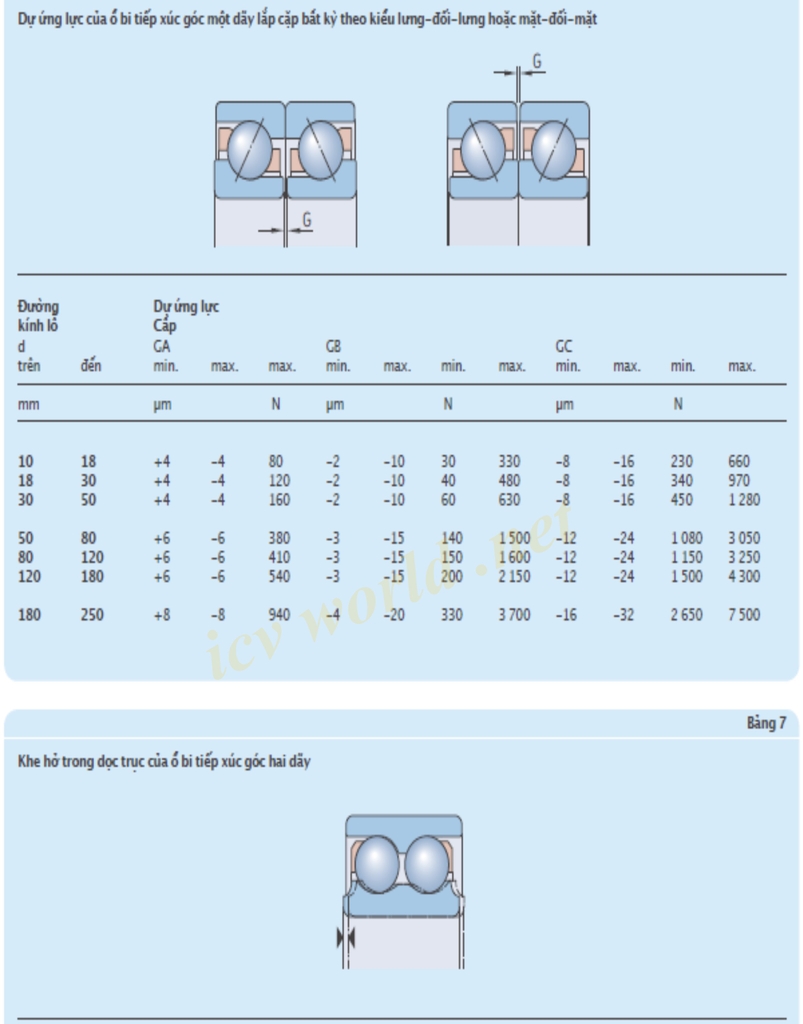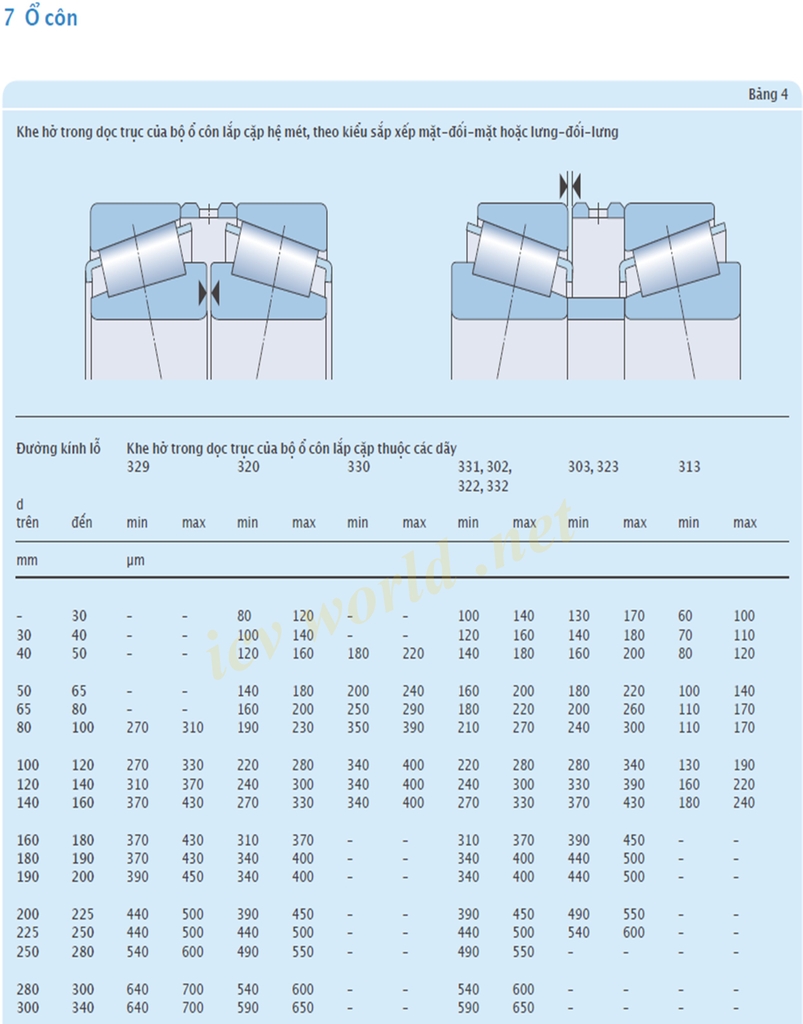
Bearing clearance (rolling bearing)
What is bearing clearance?
Internal clearance of a bearing (rolling bearing) is defined as the distance that one ring of a rolling bearing can be displaced relative to the other in the radial (radial clearance) or axial direction (radial clearance). axial clearance). It is necessary to distinguish between the initial clearance (when not installed) and the working clearance, when the bearing (rolling bearing) has been installed, operated and reached a stable operating temperature. In most cases For applications, the initial clearance of the bearing (rolling bearing) is larger than the working clearance.
This difference is due to the need for a tight fit on the shaft and/or in the bearing, combined with the thermal expansion of the bearing rings as well as for adjacent components. Having a proper internal clearance when the bearing is working is crucial for the bearing (rolling bearing) to work stably. In principle, ball bearings (rolling bearings) should have a working clearance (or post-tensioning) that is almost zero. Meanwhile, roller bearings, needle bearings and CARB bearings must always have a clearance (radial) ) – very small enough – when working. The same is true for tapered and angular contact ball bearings. However, for applications where high stiffness is required, tapered and angular contact ball bearings can be fitted with some prestressing (rolling prestressing)
A bearing with an initial clearance as the standard clearance, if mounted on shafts and bearings with the recommended mounting modes and operated under normal operating conditions, will have an adequate service clearance. . When mounting and operating conditions are not normal, for example, when both rings of a bearing need to be tightly fitted or when there is a significant difference in temperature, a bearing with a larger clearance should be used. or less than the standard (normal) clearance, In these cases it is recommended to check the clearance (radial) remaining after mounting. Bearings with internal clearances other than the standard clearances have the suffix symbols C1 to C5 . Clearance values for bearing types are given and are valid for unmounted bearings. For paired angular contact ball bearings (any pairing type) and tapered roller bearings, double row angular contact ball bearings and four angular contact ball bearings, the axial clearance is given instead of the radial clearance because the clearance axial is more important for these types of bearings.
Working clearance of rolling bearing
is determined by:
• Initial clearance before mounting
• Actual mounting mode or distance that
rolling bearing moves on taper shaft
• Effects of shape deviations
• Changes in clearance or prestress
force caused by assembly
• Change in size due to working temperature
Shaft distortion and longitudinal displacement
shaft, as in the case of CARB drives,
also need to be considered. The working clearance or prestressing in a bearing affects the friction, the size of the load area and the life (fatigue) of the bearing. Diagram 2 shows the relationship between clearance and prestress as well as initial parameters The diagram is based on the radial load bearing model.
Symbol for internal clearance
C1 : Smaller clearance than C2
C2 : Clearance smaller than Cn
CN : Standard clearance
C3 : Larger than standard clearance
C4 : Larger clearance than C3
C5 : Larger clearance than C4
Below is a table of clearance sizes for each type of bearing:
Ball bearings:

Angular contact ball bearings:
 Self-selecting bearings:
Self-selecting bearings:
 Roller bearings:
Roller bearings:

Needle Bearing:

Tapered Bearing:

Spherical roller bearing:

CARB Bearing:

Four point contact ball bearings:


















doxycyclinecheak
03/12/2022